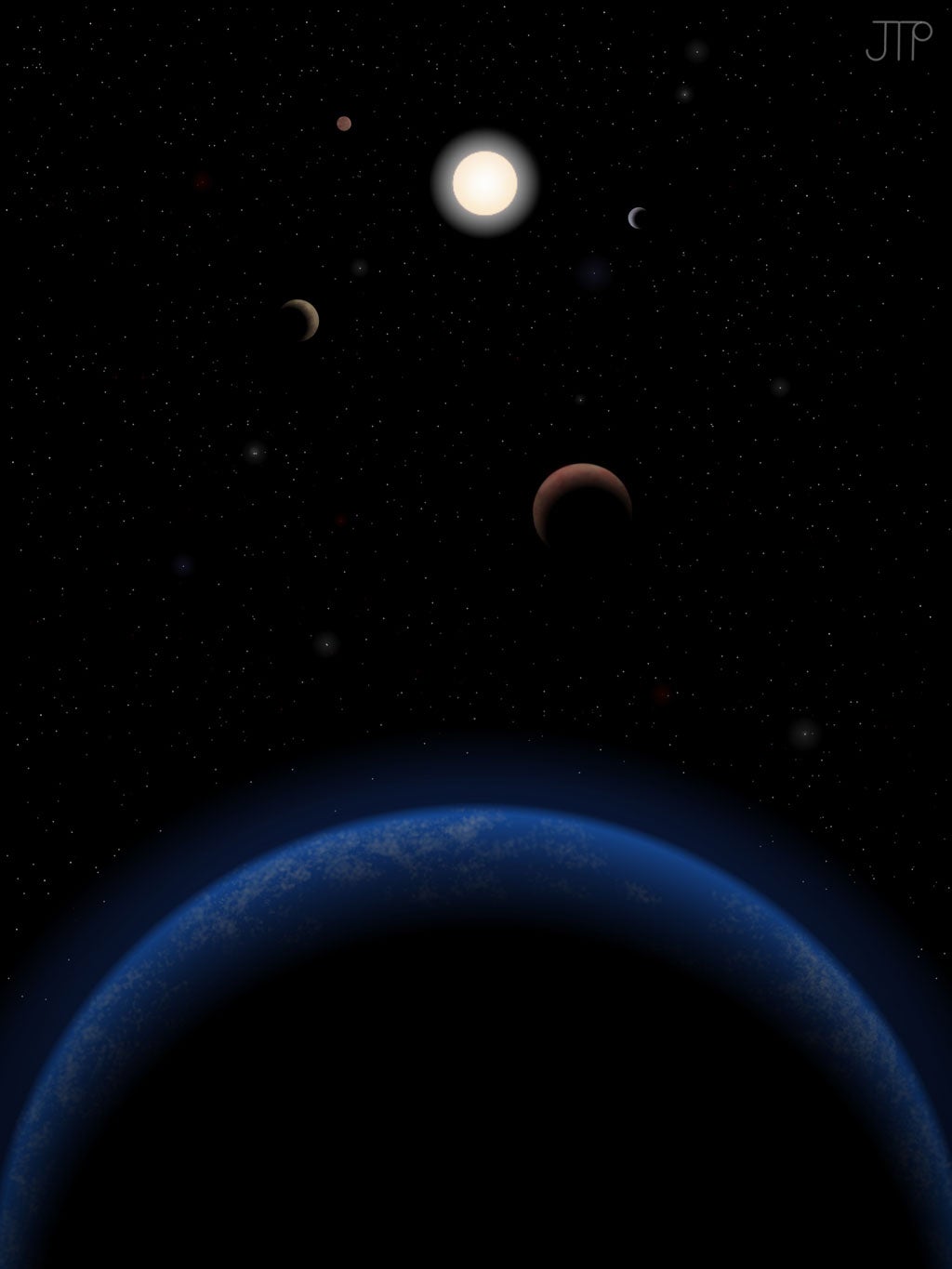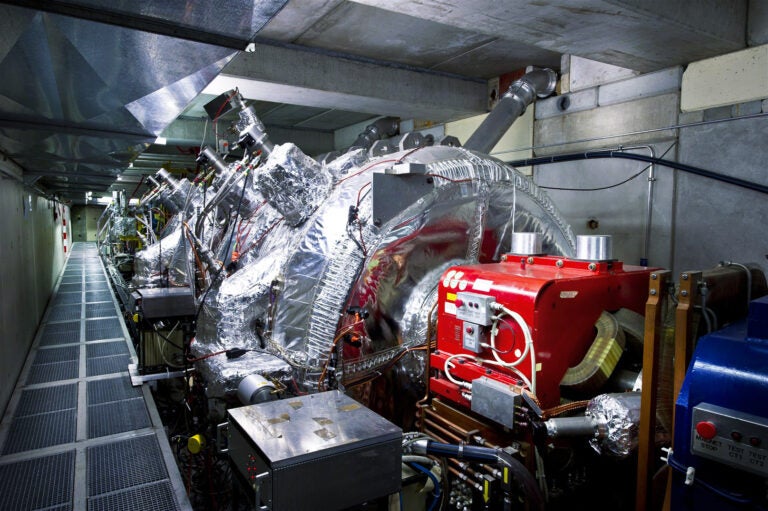At a distance of 12 light-years and visible with the naked eye in the evening sky, Tau Ceti is the closest single star that has the same spectral classification as our Sun. Its five planets are estimated to have masses between two and six times the mass of Earth — making it the lowest-mass planetary system yet detected. One of the planets lies in the habitable zone of the star and has a mass around five times that of Earth, making it the smallest planet found to be orbiting in the habitable zone of any Sun-like star.
The international team of astronomers from the United Kingdom, Chile, the United States, and Australia combined more than 6,000 observations from three different instruments and intensively modeled the data. Using new techniques, the team has found a method to detect signals half the size previously thought possible. This greatly improves the sensitivity of searches for small planets and suggests that Tau Ceti is not a lone star but has a planetary system.
“We pioneered new data modeling techniques by adding artificial signals to the data and testing our recovery of the signals with a variety of different approaches,” said Mikko Tuomi from the University of Hertfordshire. “This significantly improved our noise modeling techniques and increased our ability to find low mass planets.”
“We chose Tau Ceti for this noise modeling study because we had thought it contained no signals. And as it is so bright and similar to our Sun, it is an ideal benchmark system to test out our methods for the detection of small planets,” said Hugh Jones from the University of Hertfordshire.
“Tau Ceti is one of our nearest cosmic neighbors and so bright that we may be able to study the atmospheres of these planets in the not too distant future,” said James Jenkins from the University of Chile. “Planetary systems found around nearby stars close to our Sun indicate that these systems are common in our Milky Way Galaxy.”
More than 800 planets have been discovered orbiting other worlds, but planets in orbit around the nearest Sun-like stars are particularly valuable. “This discovery is in keeping with our emerging view that virtually every star has planets, and that the galaxy must have many such potentially habitable Earth-sized planets,” said Steve Vogt from the University of California, Santa Cruz. “They are everywhere, even right next door! We are now beginning to understand that nature seems to overwhelmingly prefer systems that have multiple planets with orbits of less than 100 days. This is quite unlike our own solar system where there is nothing with an orbit inside that of Mercury. So our solar system is, in some sense, a bit of a freak and not the most typical kind of system that nature cooks up.”
“As we stare [at] the night sky, it is worth contemplating that there may well be more planets out there than there are stars — some fraction of which may well be habitable,” said Chris Tinney from the University of New South Wales.
At a distance of 12 light-years and visible with the naked eye in the evening sky, Tau Ceti is the closest single star that has the same spectral classification as our Sun. Its five planets are estimated to have masses between two and six times the mass of Earth — making it the lowest-mass planetary system yet detected. One of the planets lies in the habitable zone of the star and has a mass around five times that of Earth, making it the smallest planet found to be orbiting in the habitable zone of any Sun-like star.
The international team of astronomers from the United Kingdom, Chile, the United States, and Australia combined more than 6,000 observations from three different instruments and intensively modeled the data. Using new techniques, the team has found a method to detect signals half the size previously thought possible. This greatly improves the sensitivity of searches for small planets and suggests that Tau Ceti is not a lone star but has a planetary system.
“We pioneered new data modeling techniques by adding artificial signals to the data and testing our recovery of the signals with a variety of different approaches,” said Mikko Tuomi from the University of Hertfordshire. “This significantly improved our noise modeling techniques and increased our ability to find low mass planets.”
“We chose Tau Ceti for this noise modeling study because we had thought it contained no signals. And as it is so bright and similar to our Sun, it is an ideal benchmark system to test out our methods for the detection of small planets,” said Hugh Jones from the University of Hertfordshire.
“Tau Ceti is one of our nearest cosmic neighbors and so bright that we may be able to study the atmospheres of these planets in the not too distant future,” said James Jenkins from the University of Chile. “Planetary systems found around nearby stars close to our Sun indicate that these systems are common in our Milky Way Galaxy.”
More than 800 planets have been discovered orbiting other worlds, but planets in orbit around the nearest Sun-like stars are particularly valuable. “This discovery is in keeping with our emerging view that virtually every star has planets, and that the galaxy must have many such potentially habitable Earth-sized planets,” said Steve Vogt from the University of California, Santa Cruz. “They are everywhere, even right next door! We are now beginning to understand that nature seems to overwhelmingly prefer systems that have multiple planets with orbits of less than 100 days. This is quite unlike our own solar system where there is nothing with an orbit inside that of Mercury. So our solar system is, in some sense, a bit of a freak and not the most typical kind of system that nature cooks up.”
“As we stare [at] the night sky, it is worth contemplating that there may well be more planets out there than there are stars — some fraction of which may well be habitable,” said Chris Tinney from the University of New South Wales.










